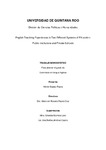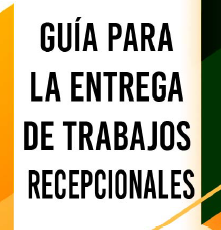Mostrar el registro sencillo del ítem
English teaching experiences in two different systems of education: public institutions and private schools.
| dc.contributor.author | Espejo Reyes, Hector | |
| dc.contributor.other | MURRIETA LOYO, GRISELDA; 248481 | |
| dc.contributor.other | JIMENEZ CASTRO, ANA BERTHA; 891209 | |
| dc.date.accessioned | 2023-09-18T17:40:31Z | |
| dc.date.available | 2023-09-18T17:40:31Z | |
| dc.date.issued | 2008 | |
| dc.identifier.uri | http://hdl.handle.net/20.500.12249/3389 | |
| dc.description.abstract | Nowadays, English is being considered as the universal language for business and technology (second most spoken language). After World War II, the strong political and military predominance of U.S. marked a substantial economical and cultural influence that displaced French from the language for diplomacy (Cristal, 1997). From that time on, English has become a global language. In these days, English is seen as the most versatile language since it is used for traveling, business, getting better jobs, higher studying degrees, and for many other reasons. For example; as The United States produces the majority of new technology and have an outgoing economy, new English words turn up, so the English vocabulary remain in a constant growing. George Weber, in his article “The World’s 10 Most Influential Languages” (1997), argued that English was the second most spoken language after Chinese language. A recent survey by The Summer Institute for Linguistics (SIL) Ethnologic Survey (1999) stated that English, with its 322,000,000 native speakers, was the third most spoken language after Chinese and Spanish. However, nowadays English is considered the fourth most spoken language after Mandarin Chinese, Indian and Spanish. “In addition, English is the official language of several countries like Canada, United Kingdom, Ireland, Australia, New Zealand, several islands of the Caribbean and the Pacific Ocean as well as in some African countries, including South Africa and most importantly in the United States of América” (Weber, 1997). | |
| dc.description.provenance | Submitted by Guadalupe Castillo Villanueva (castillogm@uqroo.edu.mx) on 2023-09-18T17:39:17Z No. of bitstreams: 1 PE1128.E86.2008-49996.pdf: 151888 bytes, checksum: 02ae54c3c18fb1d51ba07be20b2d6b93 (MD5) | |
| dc.description.provenance | Approved for entry into archive by Guadalupe Castillo Villanueva (castillogm@uqroo.edu.mx) on 2023-09-18T17:40:31Z (GMT) No. of bitstreams: 1 PE1128.E86.2008-49996.pdf: 151888 bytes, checksum: 02ae54c3c18fb1d51ba07be20b2d6b93 (MD5) | |
| dc.description.provenance | Made available in DSpace on 2023-09-18T17:40:31Z (GMT). No. of bitstreams: 1 PE1128.E86.2008-49996.pdf: 151888 bytes, checksum: 02ae54c3c18fb1d51ba07be20b2d6b93 (MD5) Previous issue date: 2008 | |
| dc.format | ||
| dc.language.iso | eng | |
| dc.publisher | Universidad de Quintana Roo | |
| dc.rights.uri | http://creativecommons.org/licenses/by-nc-nd/4.0 | |
| dc.subject | Inglés – Estudio y enseñanza | |
| dc.subject.classification | HUMANIDADES Y CIENCIAS DE LA CONDUCTA::LINGÜÍSTICA::LINGÜÍSTICA APLICADA::ENSEÑANZA DE LENGUAS | |
| dc.title | English teaching experiences in two different systems of education: public institutions and private schools. | |
| dc.type | Trabajo de grado, licenciatura | |
| dc.type.conacyt | bachelorDegreeWork | |
| dc.description.enky | 736 | |
| dc.rights.acces | openAccess | |
| dc.identifier.lcc | PE1128 | |
| dc.identificator | 4||57||5701||570111 | |
| dc.audience | generalPublic | |
| dc.division | Campus Chetumal Bahía | |
| dc.division.sub | División de Políticas y Humanidades | |
| dc.division.programa | Lengua Inglesa |
Ficheros en el ítem
Este ítem aparece en la(s) siguiente(s) colección(ones)
-
Licenciatura [2590]






